


 |
 |

|
| Trip Planning | Itinerary | Brief History of Oman | Daily Log & Photos |
|
Trip Planning |
Virginia suggested we take a cruise to Oman for my 80th birthday as that is one country I haven't been to. And to celebrate my birthday in Oman would be a treat.But I actually had my birthday on the Arabian Sea before landing in Oman!
We could also visit several other countries that would help me complete my world map of areas I have traveled to.
This trip would include Dubai, Oman, India, and Sri Lanka.
Here we are having coffee at the local bazaar in Muscat Oman!
We ended up returning to Dubai after our Sri Lanka tour due to the virus closing the ports of Thailand and Singapore. Virginia and I had already been to Thailand and Singapore so we really didn't care as we both received $150.00 to spend as we pleased as we sailed four days back to Dubai!
Trip Itinerary
Sailing on the Arabian Sea
Its total area is 3,862,000 km (1,491,000 sq mi) and its maximum depth is 4,652 metres (15,262 ft). The Gulf of Aden in the west connects the Arabian Sea to the Red Sea through the strait of Bab-el-Mandeb, and the Gulf of Oman is in the northwest, connecting it to the Persian Gulf.
The Arabian Sea has been crossed by many important marine trade routes since the third or second millennium BCE. Major seaports include Kandla Port, Okha Port, Mumbai Port, Nhava Sheva Port (Navi Mumbai), Mormugão Port (Goa), New Mangalore Port and Kochi Port in India, the Port of Karachi, Port Qasim, and the Gwadar Port in Pakistan, Chabahar Port in Iran and the Port of Salalah in Salalah, Oman.
The largest islands in the Arabian Sea include Socotra (Yemen), Masirah Island (Oman), Lakshadweep (India) and Astola Island (Pakistan).
Brief History of Oman
Oman Itinerary

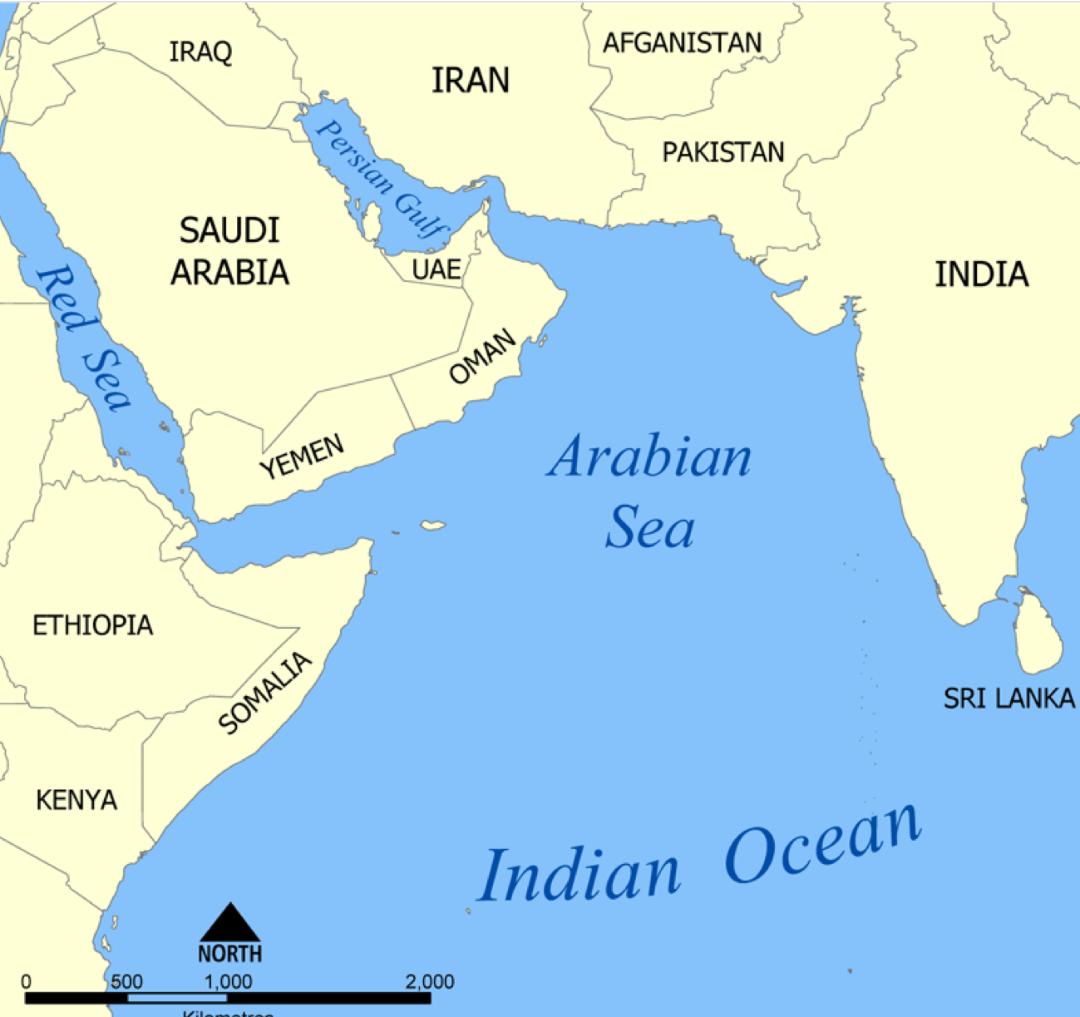 The
Arabian Sea is a region of the northern Indian Ocean bounded on the north by Pakistan and Iran, on the west by the Gulf of Aden, Guardafui Channel and the Arabian Peninsula, on the southeast by the Laccadive Sea, on the southwest by the Somali Sea, and on the east by India.
The
Arabian Sea is a region of the northern Indian Ocean bounded on the north by Pakistan and Iran, on the west by the Gulf of Aden, Guardafui Channel and the Arabian Peninsula, on the southeast by the Laccadive Sea, on the southwest by the Somali Sea, and on the east by India.
Oman:The first human settlement in the history of Oman was in approximately 3000 BCE, when the area was inhabited by nomadic cattle herders. In the 3rd century CE, the area came under the control of the Sassanid Empire which lasted until the 7th century, when the Umayyad Caliphate took control and introduced Islam in the area. The area was sustained by fishing and pearl diving for a thousand years, with the first records of the town being made in 1799 when the Bani Yas clan established it as a dependency of Abu Dhabi.
Oman became a separate Sheikhdom in 1833, when the Al-Maktoum dynasty of the Bani Yas clan (initially from Abu Dhabi) took it over peacefully. The invention of artificial pearls in 1926 and the Great Depression in 1929 caused a collapse in the international pearl market, which resulted in the emir Sheikh Saeed looking for an alternative source of income and inviting Indian and Iranian traders to settle there without paying any tax and Oman becoming one of the leading re-export ports in the world. In 1966, oil was discovered in Oman, which changed the country beyond recognition and led to Oman becoming the vibrant, modern, business-centred city.
|
Oman's Break with the United Arab Emirates |
Oman:
United Arab Emirates relations are the relations between the United Arab Emirates and Oman. The U.A.E. has an embassy in Muscat while Oman maintains an embassy in Abu Dhabi and a consulate-general in Dubai. Both countries are part of the Middle East region and share close cultural ties. Oman and the U.A.E. also share very large borders with each other, including two exclaves of Oman accessible on land only through the U.A.E, and also seem to border the Gulf of Oman. The U.A.E. used to be part of the Sultanate of Oman up until the 2nd of December 1971 when they decided to split and form their own country which was initially called Trucial Oman.
Omani – Emirati relations - November 2010 spy network discovery:
The United Arab Emirates reportedly operates a large spy network in Oman, which the Omani government was able to detect in November-December 2010. Suspected UAE agents are said to have spied on the Omani government and the military. Government sources in Amman said a number of Omani citizens were also arrested. Spies may be interested in the succession of Sultan Qaboos al-Sultan. There are also views that the spy network has focused on revealing the true value and meaning of the relations between the Sultanate of Oman and Iran. Oman enjoys very friendly relations with Iran, while Arab countries have taken a tough and hostile stance against its Persian neighbor. UAE denies any connection to the network.
Relations between the two countries have become strained since then. Oman's Sultan did not participate personally in the GCC summit in Abu Dhabi while other heads of state did as they usually do. The process of reconciliation began due to the strong efforts exerted by the Emir of Kuwait and relations between the Sultanate of Oman and the United Arab Emirates have since stabilized.
Personnal Travel Agent........
The mosque is built from 300,000 tonnes of Indian sandstone. The main musalla or prayer hall is square and 74.4 by 74.4 metres (244 by 244 feet) with a central dome rising to a height of 50 metres (160 ft) above the floor. The dome and the main minaret (90 metres (300 ft)) and four flanking minarets (45.5 metres (149 ft)) are the mosque’s chief visual features. The main musalla can hold over 6500 worshippers, while the women's musalla can accommodate 750 worshipers. The outer paved ground can hold 8000 worshipers and there is additional space available in the interior courtyard and the passageways, making a total capacity of up to 20,000 worshipers.
The mosque is built on a site occupying 416,000 m2 (4,480,000 sq ft), and the complex extends to cover an area of 40,000 m2 (430,000 sq ft). The newly built Grand Mosque was inaugurated by Sultan of Oman on May 4, 2001 to celebrate 30 years of his reign.
We didn't visit the mosque about a mile away but I took a photo and we thought it was much nicer as it was white and was very beautiful.
The Palace is used for official functions and receiving distinguished visitors. In January 2012, the Sultan received Queen Beatrix of the Netherlands at Al Alam Palace during her state visit to Oman.
My Personal Travel Agent - Setting up trips to Morocco, Portugal, Sicily and many other destinations. A top Travel Consultant.
I met Viviane in 1999, sailing from Southern Chile to Southern Argentina and visiting Patagonia in April. We celebrated the Millenium New Year in Vienna in 2000 and the actual New Year of 2001 in Morocco! She can plan great trips for you with years of unique travels under her belt!
Day 3 - Muscat Oman
Muscat, Oman’s port capital, sits on the Gulf of Oman surrounded by mountains and desert. With history dating back to antiquity, it mixes high-rises and upscale shopping malls with clifftop landmarks such as the 16th-century Portuguese forts, Al Jalali and Mirani, looming over Muscat Harbor. Its modern, marble-clad Sultan Qaboos Grand Mosque, with 50m dome and prodigious Persian carpet, can accommodate 20,000 people.


We are actually on the Gulf of Oman! It is a most dramatic scene, the high mountains surround the city and we thought it was one of the most beautiful of the ones we visited on this trip! The Portugues were all over the area, including India! This is the 16th-century Portuguese fort as we sailed into Muscat.

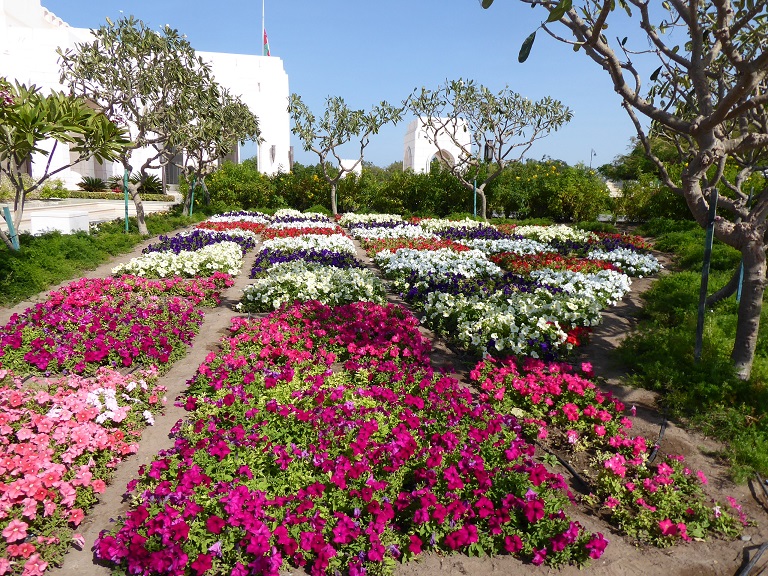
The Royal Opera House Muscat (ROHM) is Oman's premier venue for musical arts and culture. The opera house is located in Shati Al-Qurm district of Muscat on Sultan Qaboos Street. Built on the royal orders of Sultan Qaboos of Oman, the Royal Opera House reflects unique contemporary Omani architecture, and has a capacity to accommodate maximum of 1,100 people. The opera house complex consists of a concert theatre, auditorium, formal landscaped gardens, cultural market with retail, luxury restaurants and an art centre for musical, theatrical and operatic productions.

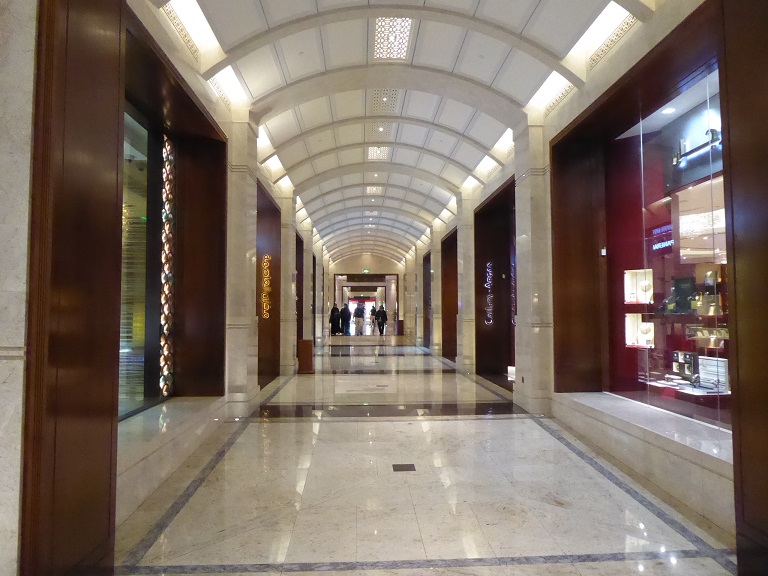
Like most places, this high end shopping area is part of the Opera House! Everything was expensive. Good news, air conditioning, bad news, not many shoppers!

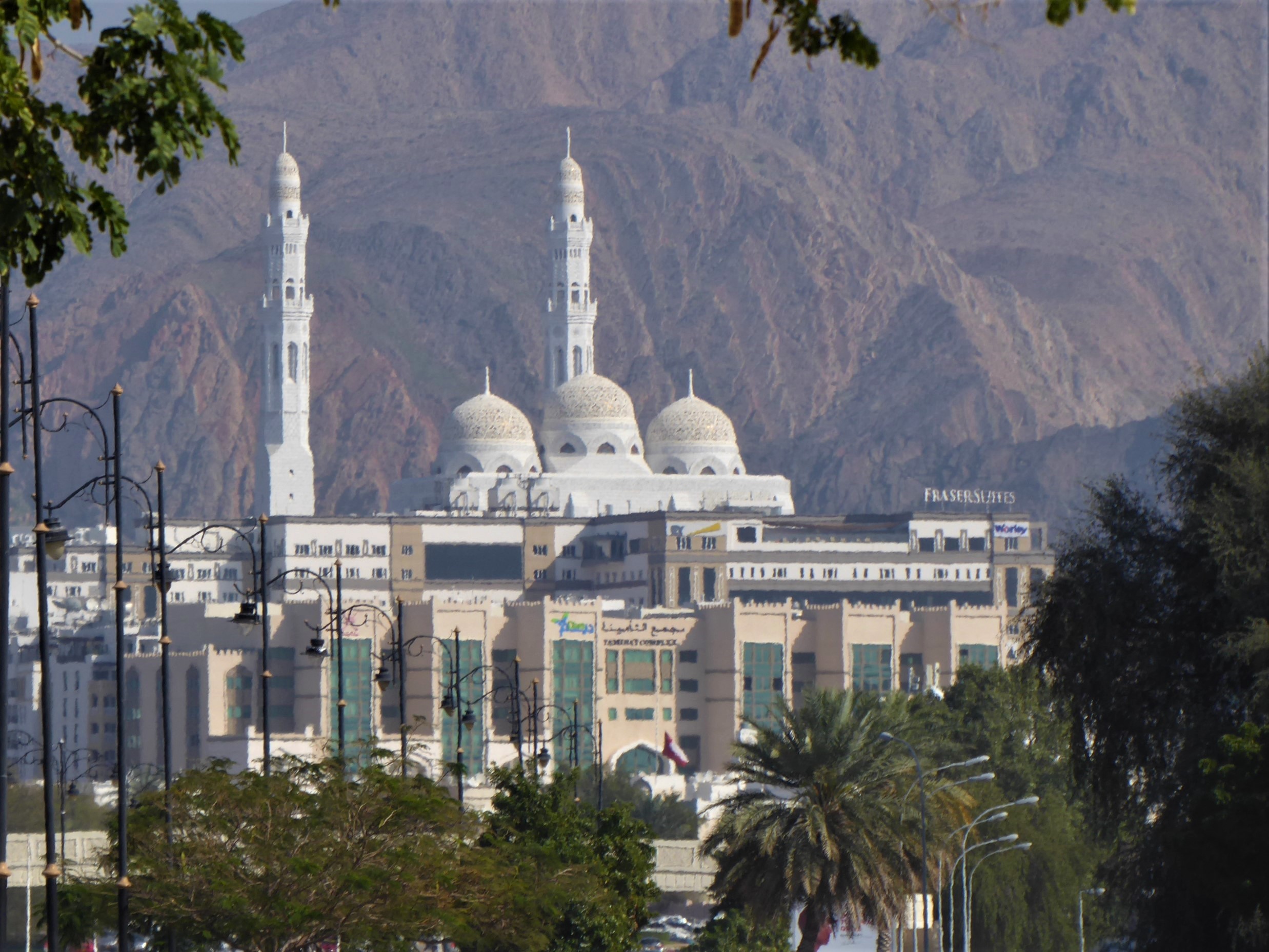
In 1992, Qaboos bin Said al Said, the then Sultan of Oman, directed that his country should have a Grand Mosque. A competition for its design took place in 1993 and after a site was chosen at Bausher construction commenced in December 1994. Building work, which was undertaken by Carillion Alawi LLC, took six years and seven months.
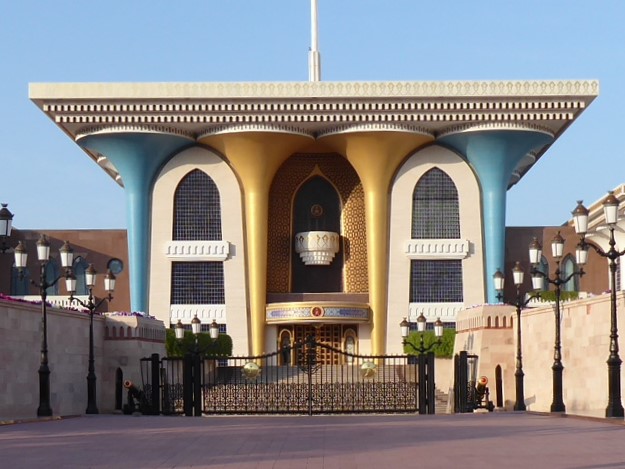

Al Alam Palace, one of six sultanic residences of the monarch, has a history of over 200 years, and was built under the watch of Imam Sultan bin Ahmed, the 7th direct grandfather of Sultan Qaboos. The existing palace, which has a facade of gold and blue, was rebuilt as a royal residence in 1972. The inner grounds of the palace remain off-limits, but visitors are permitted to stop near the gates and take photographs. Al Alam Palace is surrounded by the Mirani and Jalali Forts built in the 16th century by the Portuguese.
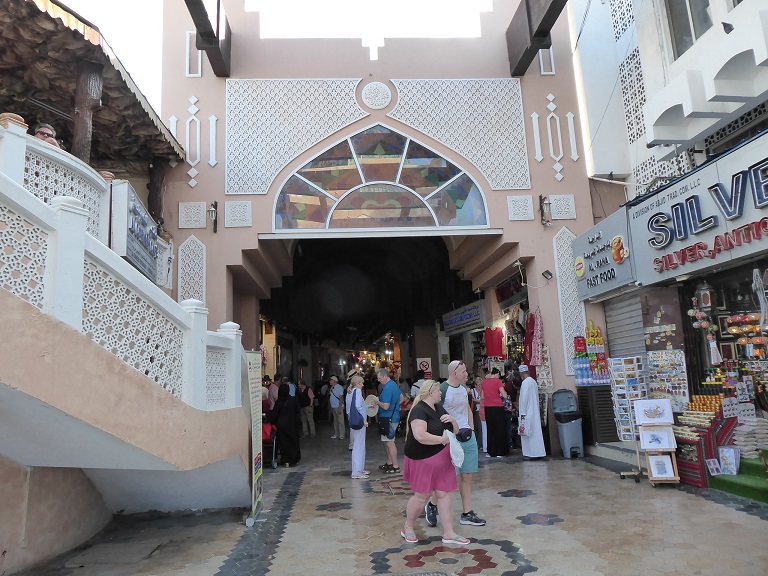

This traditional market (souk) close to corniche is a top tourist attraction. It has a cluster of numerous small shops in narrow alleys. A section of this market is dedicated of jewelry shops (gold souk). A good place to purchase souvenirs.
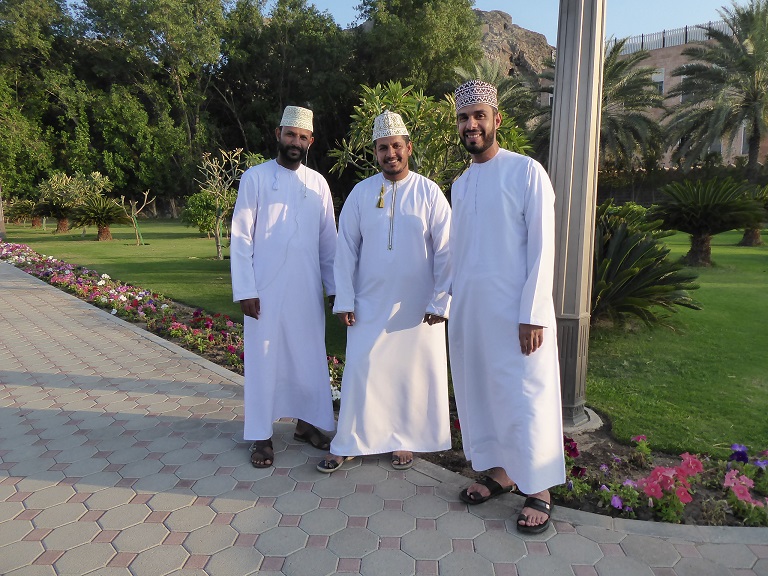
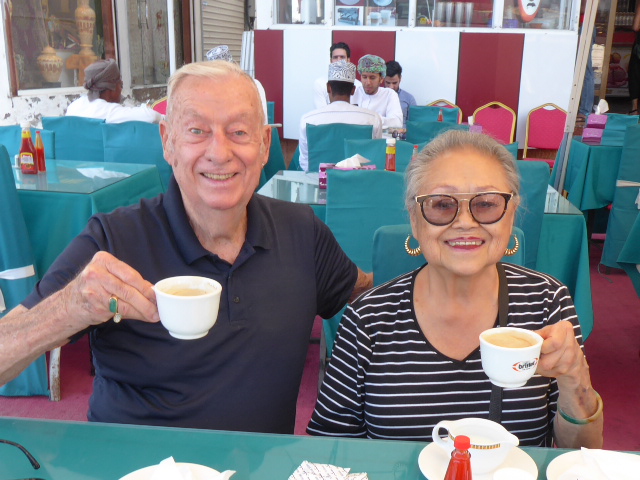
Everyone was very friendly and we ended up at the end of the tour at the local downtown bazaar. We have been to so many of them we were too tired to shop. And six or more buses stopped and unloaded at the same time so it was terrible, rought streets and crowds pushing. We decided to try the local coffee and relaxed while others shopped!
Created on: 2017.02.28

Updated on: 2020.02.23